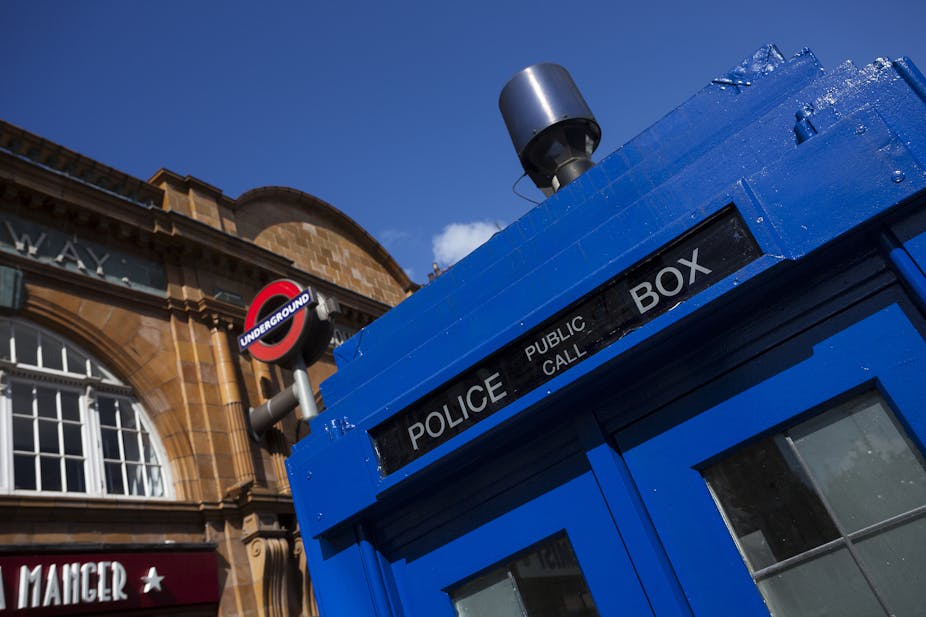So it’s welcome back to Doctor Who. The ninth series of the 21st-century revival looks like it may be among the best yet, with the Doctor (Peter Capaldi) facing off against assorted Daleks, Zygons and Missy, his sex-changed nemesis, formerly known as The Master.
Having previously been derided by TV executives as an industry joke, it is now ten years since Doctor Who was revived to spectacular success by first showrunner Russell T Davies. Nu-Who has done many things for the British TV industry. It rediscovered Saturday night TV, which was long thought to have died in era of multi-channel broadcasting, multiplexes and other leisure distractions. It showed that if the programme was big and exciting enough, the audience would sit down to watch together as a family.
It also alerted British producers to the power of “high concept” TV drama. Instead of building a narrative out of the realism of setting and character, the traditional preoccupations of British TV drama like Eastenders and Coronation Street, this was more akin to American shows like Buffy the Vampire Slayer and The X-Files: developing a concept that could be transformed into a brand and exported all around the world.
Steven Moffat, Davies’ successor, has consolidated this first wave of success. UK ratings continue to hold up, supplemented by many viewers choosing to watch on catch-up services such as the BBC iPlayer. At the same time, Doctor Who has become one of British TV’s biggest international exports, screened in more than 70 countries.
The Celtic dimension

Viewers in the Moffat era may also have noticed something else: the show is full of Scots. Not only is Moffat a son of Paisley, he was instrumental in casting the Glasgow-born Capaldi as the 12th Doctor. You can add to this the key recurring roles of Madame Vastra, played by Paisley-born Neve McIntosh, and Missy, played by Michelle Gomez from Glasgow. Meanwhile the show remains produced from Cardiff in the specially built Roath Lock facilities, showcasing the talents of Welsh crew and technicians. Much exterior filming at locations around the city also helps to show off the beauty and variety of the Welsh landscape.
This might suggest there has never been a better time for British TV drama production representing and involving what we in the UK call the “nations and regions”. Indeed the BBC has made specific commitments to better represent these areas and spread production more widely to them.
Yet speak to many TV practitioners in Scotland and Wales and the picture painted is often more gloomy. At a TV drama symposium I attended in Cardiff a couple of years ago, one person even compared the BBC’s drama studios in Roath Lock to “a giant Nike factory”. He said it had no real connection to the area, and was set up simply to exploit workers without putting much back into the community. The feeling was that there were few opportunities for local producers from outside the BBC to get a look-in. This is known in the trade as “warehousing”, where ultimate creative control continues to lie in the hands of others from the metropolitan centre.

The Doctor Who effect
Undoubtedly there have been knock-on effects in bringing Doctor Who to Cardiff, which was driven by Welsh-born Davies and original executive producer Julie Gardner. The city had not previously been seen as a big player in national TV drama. Now it came to be designated by the BBC as a drama hub, to which the likes of Bristol-made hospital show Casualty have been relocated.
Yet to what extent is Wales truly being represented to the UK by these developments? While long-running Welsh-language soap opera Pobol y Cwm (“People of the Valley”) is now also produced from Roath Lock, for example, it is only shown within Wales. And despite all the production activity in Cardiff and the BBC’s nations and regions commitments, Gavin and Stacey (2007-10) and Torchwood (2006-11) were the last time big BBC TV dramas showcased Wales, its people and culture across the UK.
The Doctor Who effect has also impacted Scotland. In contrast to Wales pre-Doctor Who, Scotland’s TV drama history is very rich. It was a second centre of BBC production outside of London, with many successful and acclaimed dramas produced there – from Sunset Song in the 1970s to Tutti Frutti in the 1980s; Hamish Macbeth in the 1990s and Monarch of the Glen in the early 2000s.
But since the rise and rise of Doctor Who and Cardiff, the TV drama department in Scotland has arguably been struggling with new hits. It has tried to find a niche with adaptations of detective novels such as Case Histories (2011-13), Field of Blood (2011-13) and perhaps its most notable success so far, Shetland (2013 to date). But these dramas, often commissioned for small episode runs and networked by the BBC in the summer period (in the case of the first two) inevitably lack the presence and impact of big long-running “brands” like Doctor Who and Casualty.
All of this is arguably a consequence of the runaway success of Doctor Who. BBC TV drama is a bit like an ecosystem where what happens in one part can affect what happens in another. While Wales has surged ahead, Scotland has struggled to keep up, though arguably there have been cultural losses for both.
Northern Ireland is another small country that also “warehouses” a global franchise, in this case Game of Thrones. Yet as it has shown with the success of the Belfast-set drama The Fall (2013 to date), one or two indigenous hits can make all the difference. So when you sit down to thrill at the Daleks returning to Doctor Who, spare a thought for TV drama staff in the nations and regions who, just like the good Doctor and his companions, are gamely struggling to duck the death-rays and avoid extermination. With BBC Charter renewal again on the agenda, hopefully soon they will have a better story to tell.

